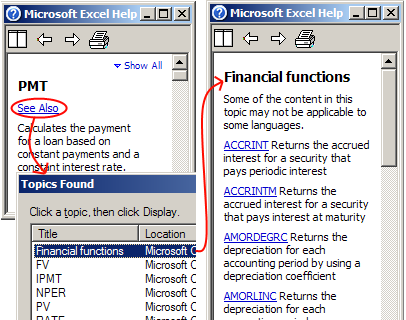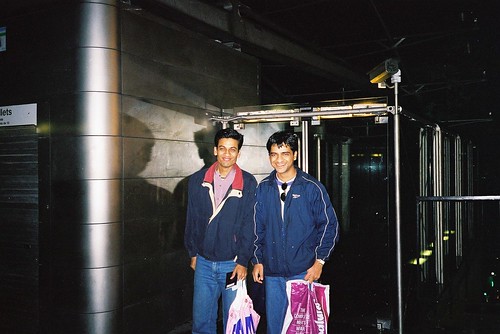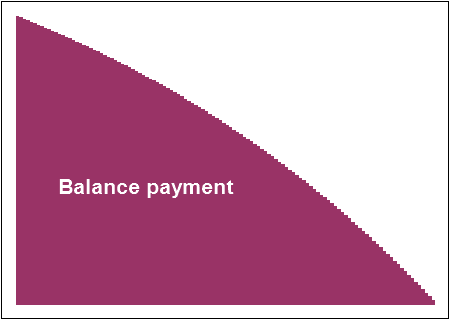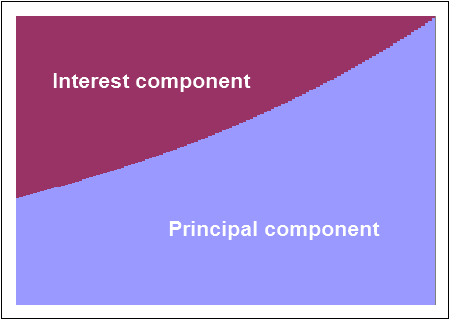This is the 11th of 15 articles titled Classical Ilayaraja appeared on Usenet in the 90s.
I’ve added links to the songs, so you can listen as you read.
You could also try my Tamil song search.
V.G.Pannerdass has got an experimental animal in his V.G.P Golden Beach near Madras! That is his “goorka”. He pays that watchman only to stand near the gate with an expressionless face. Whatever the passersby do, he would stand there with the same old expressionless face! Let Kamal Hassan do all the “seshtai” that he does in the last scene of Moonram Pirai, the VGP goorka’s mask like face would show neither happiness nor sadness! He’d neither cry nor laugh. The VGP management is so proud of this guy that it is even ready to bet a hefty prize money if that would motivate somebody to make this guy cry or laugh. I cannot help wondering at VGP’s morbid taste in having this kind of a person at their gate.
Now, can we consider the usage of raagas to make this person change his emotions? If Ilayaraja goes before this person and sings his Valli song (enna enna kanavu) or Payanangal Mudivadhillai song (vaigaraiyil) in Subhapanthuvarali raagam, would it make his affect sad? It perhaps would, because some of the raagas indeed have a powerful negative effect on one’s affect, causing him to go to the lows! Let SPB go before this person and sing his Mayuri song (idhu oru mananaatiya medai) in the raagam Brindavana Saranga, or L.Vaidyanathan sing his veeNaiyadi nee enakku (Ezhavadu Manidhan) in Kalyani, would it make his affect happy? It perhaps would, because some raagas indeed have a very powerful positive effect on one’s affect, causing him to go to the highs! (This is what music therapy basically aims at, right?). Now, the question is, are there any raagas that can really make this person laugh or at least to open his pursed lips and give a smile ?!
The human species is very conceited that only it can laugh! It has concluded that the sense of humour is an essential human quality. Maybe, during the innumerable years of evolution, it is the only species that has somehow successfully learnt to expressively manifest its inner humourous feelings. Just because the animals do not widely open their mouth and laugh (as many of us do often, much to the disgust of our neighbours!), the old ancestral members of our species seem to have concluded that the animals do not have any sense of humour. I at least know of one another species that can express its humour well! Buy a pocket of “kadalamittai” and start ascending the stairs of Trichi Malaikotai to have Lord Ganesha’s darshan. Those garrulous monkeys ‘gumbal’ there will stealthly follow you and at one oppurtune moment “rag” you and snatch away your kadalamittai with a swift agile attack! While they recede away from you (or rather you recede away from them) the victims report noticing a kinda derisive laughter by the monkeys! Anyway, if raagas can cause sadness and crying, can it also cause a person to laugh!
Music directors often face this challenge, when directors tell them a comical situation in their movie and ask for a tune. M.S.Viswanathan has done a fantastic job in the movie Bale Pandiya. The song is neeyE enakku enRum. MSV tuned that song in chaste Sudha Danyasi. The situation of that song is a very comical one, Sivaji Ganesan and first class actor M.R.Radha vying with each other in their jest. The lyrics too is quite comical. But, the question is, does the Sudha Danyasi raagam of the song have an element of humour in it! Probably not.
Ilayaraja too has used pure classical raagas to suit humourous situations. In Thambiku Endha Ooru, Madhavi is a city girl. Hero Rajini is a country brute! Madhavi happens to come to Rajini’s village once. And now, even a small “paapa” with a rubber nipple in its mouth will tell the rest of the story: Rajini will sing a song critisizing Madhavi, Madhavi will get irritated, then she will fight with Rajini and vice versa, and when the villain comes, both of them will start loving each other and finally, the extras in police dress will come and arrest the villain….! Can you try to guess what raagam Ilayaraja has used for the comical song! Arabhi!
Arabhi is a Sankarabharanam janyam. Its arohanam and avarohanam are Sa Ri2 Ma1 Pa Da2 Sa; Sa Ni3 Da2 Pa Ma Ga3 Ri2 Sa. It is a very pleasant raagam. It is closely related (sanchara-wise) to Devakandhari. There are no cinema songs in Devakandhari. But, in the pre-Ilayaraja period we have got one Arabhi song. That is Erikkarai mElE. I guess it has been tuned by the then giant K.V.Mahadevan. T.M.S starts the song in his “ganeer” voice in the madhyama sthayi dhaivatham. Ilayaraja’s first Arabhi song is “aasai kiLiyE arai kilO puLiyE..”
Malaysia Vasudevan has sung this song. He is one of the best singers of our time, who has been appropriately used only by Ilayaraja. Malaysia does not seem to have got any proper training in classical music. His voice is like a resume with record of BA (history) from Madras University and 2 months of computer training in NIIT! If you give it to a proper bodyshopper it will come to California. Otherwise it will just go to teach 7th standard history text in Madras Corporation school! (Thou shall not take offence, dear resume!) Like Rahman uses the “thagara dappa” voice of Suresh Peters wonderfully and sells it, Ilayaraja has used Malaysia’s unpolished voice excellently in many of his highly classical songs. aasai kiLiyE is one such instance….The song starts like this Ma Pa Da Sa, Da Sa Da Pa, Pa Pa Da Pa Ma Ga Ri Sa Ri, Ri Ma Pa Da Da Pa Da Sa….It is a fantastic song, giving all the raaga-lakshanam of Aarabi in a very pure form. Even though the avarohanam of Aarabi just lists all the swaras of Sankarabaranam plainly, there is a specific way by which you got to use those swaras to make it sound Aarabi. The temporal duration (karvai) of Ma is usually protracted while the gandaram is just touched upon very rapidly. Thus Ma Ga Ri Sa is sung like Ma….GaRi Sa. Also, we can practically omit the usage of nishadam and the raagam would still be unblemished. Ilayaraja has not used Ni in this song. The lyrics of this song is funny.
aasai kiLiyE arai kilO puLiyE
azhugina thakkaaLiyE
mEyura kOzhi ellaam aaguradhu kariyE
adiyE en arumai thavakkaLaiyE
If the hero taunts the heroine by calling her as “spoiled tomato” then it is understandable. When the hero calls her as “half kg of tamarind”, what does it mean? But, that is how the song goes…. Now, lately Ilayaraja has given two more Aarabi songs. One song goes like mannavanE mannavanE manasukkEththa thennavanE (Thandhu Vitten Ennai). I think it is a Vijayakanth movie song. The song has been sung by SPB and Janaki. It is a very melodious song. He has used Ni in this song. The last Aarabi that he has given comes in the movie Pudhupatti Ponnuthayee. The song is madhurai vaazhum meenakshiyE. This is also an unbelievably classic song sung by K.J.Yesudoss and Janaki. One can very easily learn Aarabi with the help of these cinema songs! But, does Arabi have an element of humour? Probably not.
Carnatic music is like Choolaimedu 24 hours polyclinic in Madras. You go there with just symptoms of common cold. But the Doctor there (who has not yet cleared the subjects that he failed in final MBBS) has lots of surprises for you. He says that you are very week and almost coerces you to have the supposedly invigorating 5% glucose drip (which hardly has a total of 25 gm of glucose in it!). Carnatic music has got lot more surprises to give you than this Doc! There is a raagam which has got the same arohanam and avarohanam as Aarabi (Sa Ri Ma Pa Da Sa; Sa Da Pa Ma Ga Ri Sa; Since we can sing Aarabi without using Ni, we can say so) The raagam is Sama, another janyam of Sankarabaranam. Even though Aarabi and Sama are swara-wise identical, they are totally two different raagas sanchara wise. The difference comes in the way we deal with the gandaram. In Aarabi, the Ga is just touched upon while we go from Ma to Ri. In Sama, we can be little more liberal (time-wise) with Ga. Also, there are certain special prayogams in Sama like Ma Pa Da Ma. So, these minute details make a drastic difference in these raagas.
MSV is the only one who has beautifully used this wonderful raagam, Sama in cinema. He has given two Samas. One is in the movie Sirai. The story is a revolutionary plot charecterizing the pathos of Lakshmi, an innocent rape victim. She is the wife of a Brahmin priest, Prasanna. After the rape the priest finds her repulsive, and she decides to go and live with the rapist (Rajesh)! In the first few scenes there is a song to portray the kind of love the priest and his wife have for each other. The song is naan paadi kondE iruppEn in the raagam Sama. Oh, boy! What a song! What a classic Sama piece! Vani Jayaram has sung this song. The heroine says:
saahithyam naanaaga sangeetham neeyaaga
naal thOrum isai archchanai
en paadal nee kEtka un kaNgal enai paarkka
naanE un varadhakshinai
How beautifully the poet (Kannadasan?) has written about their love. Later, after the rape, the hypocrisy of the hero’s love gets fully exposed. Very rarely, we get to see such classic song, classically acted and classically picturised (director: R.C.Shakthi). The second Sama that MSV has given is mounaththil viLaiyaadum manasaakshiyE (Nool Veli) This song has been sung by Dr. M. Balamurali Krishna. It is a great song. These are all great contributions of MSV to Thamizh cinema music.
Recently, in the movie Sathi Leelavathi there is a very humourous song. The song has been sung by Kamal Hassan himself. This maarugO maarugO is in the raagam Kaanada. Kaanada is a major gana raagam. It is probably now less sung in the katcheris than about a few decades ago (the popularity of a raagam seems to go through a cyclical change through years!) Kaanada is a janyam of Karaharapriya. Its arohanam and avarohanam are Sa Ri2 Ga2 Ma1 Pa Ma1 Da2 Ni2 Sa; Sa Ni2 Pa Ma1 Ga2 Ma1 Ri2 Sa. The key prayogam that gives Kaanada its identity is Pa Ma Ga Ma Ri Sa. Ilayaraja has followed the grammer of this raagam sincerely in the pallavi and charanam. But the interlude music is not very good. Because, he used this raagam for a humourous situation, does it mean that it has an element of humour in it! Probably not.
Earlier, he used Kaanada in a very majestic way in the movie Sindhu Bhairavi. The song is poomaalai vaangi vandhaan. Yesudoss! With the drone of the Thamboora, and the usage of very minimal instruments, it is a fantastic song. Rahman has few Kaanada’s to his credit too. First, pudhu veLLai mazhai in the movie Roja. There is another number kisu kisu nammakul kidaiyaadhu (Manidha Manidha). There is a liberal Ni3 in this song. Deva scored a Kaanada song too (thennamara thoppukullE kuyilE – Michael Raj) Earlier, how can we forget the old gem mullai malar mElE by the music directors of yesteryears. Dharbari Kaanada is closely related to Kaanada. While Kaanada is the janyam of the 22nd melam (Karaharapriya), Dharbari Kaanada is a janyam of the 20th melam (Nadabhairavi). Thus we use sudha daivatham (Da1) instead of Da2 (sathuchrathi daivatham) in Darbari Kaanada. Ilayaraja has a few songs in this raagam. The best example is aagaaya vennilaavE in the movie Arangetra Velai. Uma Ramanan and Jayachandran (or Yesudoss?). Uma Ramanan is another unfortunate singer (like Malaysia). Only Ilayaraja has exploited her marvellous voice to the maximum capacity. Recently he has used her in Paatu Paadava (nil nil nil; an half boiled Vasantha) and in Pudhupatti Ponnuthayee (oor urangum nErathilE; a superb Hindholam). Perhaps his first Darbari Kaanada is isai mEdaiyil (Illamai Kalangal) sung by SPB and Janaki. There is another one in the movie Mounam Sammadham (kalyaana thEnnila) by Yesudoss.
A couple of years ago, cinematographer Ashok Kumar directed a Hindi movie called as Kamaagni. Reportedly he had sexploited the heroine from top to bottom as the story was some kind of abstract Freudian theme! (P.C.Sriram did the same to Ishwariya in his movie Meera. Is there any association between camera-men turned into directors and hard-core sexploitation?) My brother tells me that there is a very good Darbari Kaanada song in that movie. And, it seems Ilayaraja has done a very rich re-recording in that movie, mostly in Darbari Kaanada!
There is a song in the movie Enga Ooru Paatukaaran in which (I presume) that our village hero “pasu nesan” Ramarajan milks his cow (the meaning of the song goes like that). I don’t know if that scene was supposed to be comic in that movie, but since Ramarajan would have mostly come in his “touser”, probably it was a comedy scene! Can you imagine what raagam Illagaraja has used to tune this song azhagE nee pErazhagi? Kunthalavarali! Look at the selection of raagam! Kunthalavarali is a Karaharapriya janyam. Sa Ma1 Pa Da2 Ni2 Da2 Sa; Sa Ni2 Da2 Pa Ma1 Sa. He has used this raagam very beautifully in this song sung by SPB. Particularly the thara sthayi Sa Ma prayogas are very good (veerangalum dheerangalum…) Maatai paal karakaradhuku Kunthalavarali kEkudha! I don’t know if there are any more kunthalavarali songs in cinema music.
Man is essentially a visual animal. He gets most of the information from the external world as a tremendous fund of visual input. The visual information interacts with his intellect and can cause all different kinds of emotions. Just look at the “heart-wrecking” scene of an old thaatha accidently walking on a banana skin and falling on the ground! It might be a real humourous scene! Just look at a self-assumed hero (trying to show film in front of a ladies hostel with his 2 stroke Kawasaki Bajaj!) skid and fall on the ground! It might be a real humourous scene. Strangely, just auditory input alone doesn’t seem to have the capacity to evoke man’s sense of humour! Sure that music can cause sadness and happiness. But, humour?! Recently, Music Television showed Beavis and Butt-head farting in public, with a fantastic “background” score! That music indeed seemed to be very humourous. But, if I had put off the TV and let my room-mates hear that “music” alone, I doubt if they would have at the least made a smile!
Lakshminarayanan Srirangam Ramakrishnan,
Internal Medicine Department,
Brackenridge Hospital,
Austin, Tx 78701.




